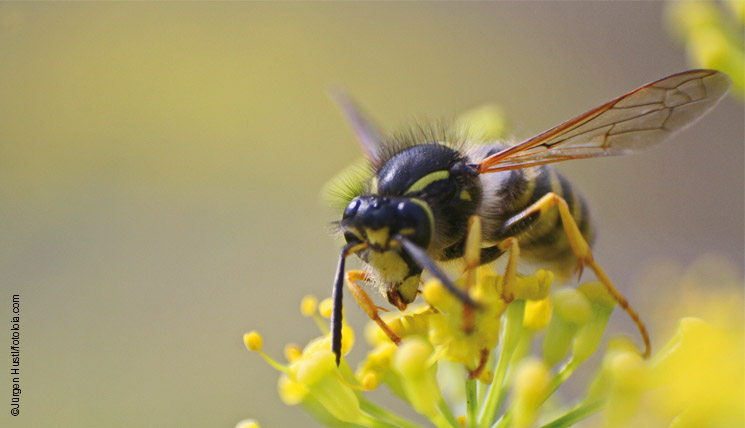They can spoil your appetite for ice cream, cold lemonade or a lovely breakfast on the terrace. And this summer they are reported to be particularly numerous. Wasps! In search for food they leave their nests in swarms, boldly helping themselves to the rich buffets found with us humans. Particularly for those people who are allergic to insect stings, outdoor meals can be a real trial of courage.
The symptoms of an allergy range from skin irritation and swelling of the face and throat to difficulty in breathing or circulatory collapse (anaphylactic shock) and generally occur seconds after the attack. Many allergic persons need to carry an emergency kit at all times to ensure fast treatment.
The allergy results from a misguided reaction of the immune system at first contact with the insect venom (sensitisation). The body produces specific antibodies (IgE) against components of the venom, which then “raise the alarm” at every further contact.
The detection of antibodies in the serum is an important aspect of allergy diagnostics. Instead of tests based on single extracts − a mixture of all components of the allergen source (in this case the insect venom) − modern laboratories now use assays based on defined, decoded components, against which the specific IgE antibodies are directed. This helps to identify the causative agent of an allergy down to the molecular level.
This detailed analysis has several benefits: The allergologist is able to differentiate between a true sensitisation to wasp venom and a cross reaction caused by an allergy to bee venom. Persons allergic to bee venom frequently react to wasp venom (or vice versa). But these cross reactions cannot be reliably distinguished from true allergies by extract-based diagnosis. The determination of the allergy-causing components, however, is of major importance in deciding whether hyposensitisation (specific immune therapy, SIT) is indicated, which is the only therapeutic option to remedy the cause of an allergy. During this therapy the patient is exposed to the allergen over a long period of time to slowly accustom the immune system to the substance. However, SIT is only successful if the patient is sensitised to certain components of wasp or bee venom, i.e. to the so-called specific major allergen components, since only these are contained in the therapeutics in a sufficiently potent amount. In sensitisations to minor components the therapy would most probably be ineffective.
For molecular allergy tests the following rule applies: The more relevant allergen components can be investigated in one incubation, the better!
Therefore, the EUROLINE Insect Venoms for diagnosis based on defined partial allergens (DPA-Dx) has recently been supplemented by new important components, which are located on the blot strip next to the extracts (i3 and i1) and the major allergen components (Ves v5 and Api m1) of wasp and bee venom. The new components are Ves v1, a specific allergen component of wasp venom, Api m2, another major component of bee venom, and Api m10, a rather underrepresented molecule of the allergen extract.
